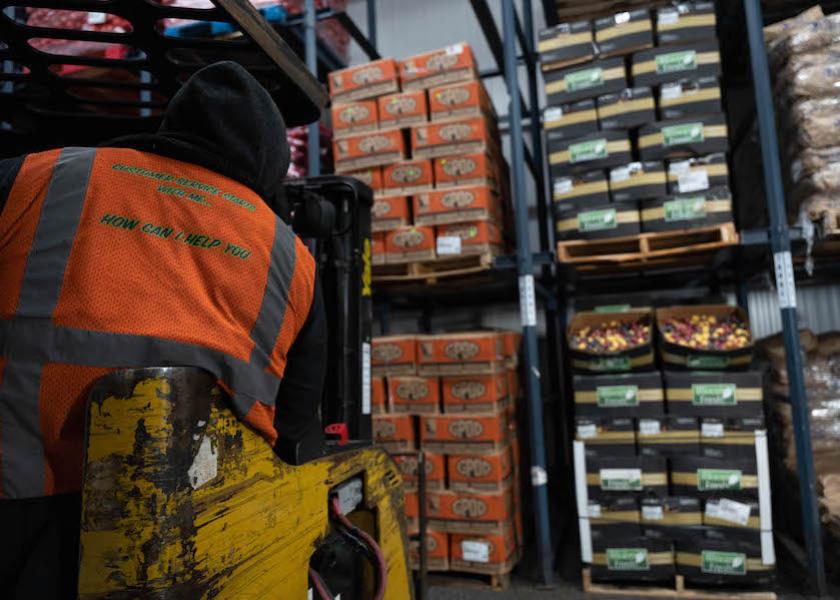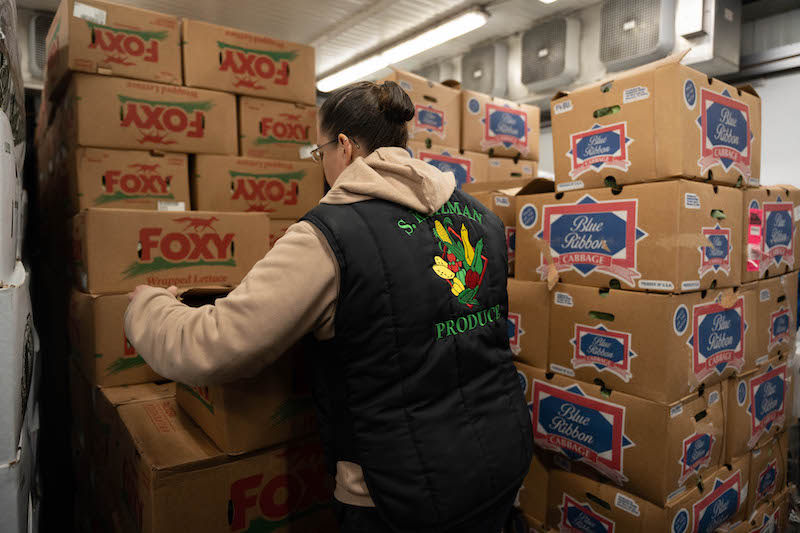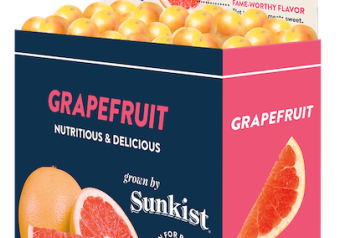New York City’s fresh produce gets an edge

It doesn’t hurt Hunts Point Produce Market’s cause that New York City Mayor Eric Adams is a self-professed vegan, who occasionally eats fish.
By following a flexitarian lifestyle, Adams embodies the ethos of the Food as Medicine movement. He champions the plant-based diet for helping him with his Type 2 Diabetes.
Adams’ sweeping package of policy changes and initiatives — including dedicating tens of millions of dollars to overhaul the Hunts Point market infrastructure — makes the personal, well, political.
His measures span the market infrastructure, retailers and underserved communities. The changes include revising standards for all food purchased and served by city agencies and expanding plant-based meals in city-run institutions such as schools, jails and shelters, according to a city government news release and Priya Krishna in the New York Times. Adams’ executive orders also affect agencies overseeing childcare centers and hospitals.
“I have long said that our agencies should not literally be feeding our ongoing health care crisis, by serving foods that contribute to chronic diet-related diseases,” Adams said in the release. “These new food standards will help minimize the consumption of processed foods and sugary drinks, while encouraging whole and plant-based food options.”
The region’s fruit and vegetable suppliers have got to love that “whole” part.
The mayor has made it a point to understand the needs of Hunts Point, said Gabriela D’Arrigo, vice president of marketing and communications for produce wholesaler D’Arrigo New York, based at the Bronx market.
Funding the market overhaul
Market officials, including market CEO and general manager Phillip Grant, are working with local officials and others to collect capital investments to overhaul the aging market’s infrastructure. The market needs to be more modern, accessible and sustainable.

Longtime market vendors are weary of this kind of talk with no action, but it seems there could be some momentum.
The COVID-19 pandemic showed how stabilizing the market can be for people’s survival in unstable times, D’Arrigo said.
“We’re essential to this industry,” she said. “If you remove the wholesalers, you won’t have a business for long in major metro areas.”
Besides seeking private funds, the market has some help on the horizon from city, state and federal governments.
- In the mayor's Blueprint for New York City’s Economic Recovery, he indicated $140 million would go toward Hunts Point infrastructure and community priorities, including $40 million in city capital funding for local open spaces and infrastructure.
- And New York Gov. Kathy Hochul announced a two-way ramp opening to provide direct access to the Hunts Point peninsula, completing Phase 1 in the Hunts Point Interstate Access Improvement Project.
- Also, the market will receive a $110 million federal grant, part of the White House administration’s U.S. Department of Transportation Infrastructure for Rebuilding America.
To access the Hunts Point Food Distribution Center — which includes the seafood market and meat market, as well as produce — in the south Bronx, vehicles have to exit the interstate highway network and use local streets.
Tractor trailers navigating local neighborhoods has been, let’s say, less than ideal for both truck drivers and the neighborhoods. It’s inefficient, causing traffic congestion and air pollution, among other challenges.
“It's going to make the lives of the truck drivers who spent their entire week driving across the country so much easier. And they really play such an important role in our industry, moving the product from farm to wholesaler to retailer. That core logistical piece is so important,” said Stefanie Katzman, executive vice president of wholesaler S. Katzman Produce, Bronx, N.Y. “So, with New York being such a huge hub for produce and with the amount of volume that comes through here, making it more accessible was a great move.”
NYC retail
When bad weather events, such as Florida hurricanes and California fires, make supply short or low quality, market vendors like Katzman can tap into other sources, such as imports, so that retail and foodservice customers can still get what they need.
D’Arrigo and Katzman said the pandemic honed their skills at acting fast and diversifying their supply and customer bases.

The mayor is working on concurrent goals too, which benefit Hunts Point.
Adams is striving to improve nutrition in food-insecure neighborhoods by offering financial incentives for grocery stores to stock healthy foods like whole, fresh produce.
Those grocery stores include corner stores, or bodegas, where almost 70% of New Yorkers in high-need neighborhoods shop at least once a week, according to the Shop Healthy NYC! Implementation Guide. These corner stores can comprise up to 80% of a neighborhood’s food retail venues.
New York City is home to more than 1,000 supermarkets, more than 25,000 corner stores, thousands of mobile fruit and vegetable vendors and almost 140 farmers’ markets.
And Hunts Point wholesalers supply a lot of the city’s smaller, independent grocery retailers, Katzman said.
“For these independent supermarkets in our general area, we’re really their main source of supply. We act as their distribution center, hitting them every day with fresh fruits and vegetables,” Katzman said. “And we need to make sure that we’re able to do that all the time, in order for them to stay in business and keep produce on the shelves for New Yorkers and beyond.”
Adams also planned to match dollars that New Yorkers spend on fruits and vegetables through the federal Supplemental Nutrition Assistance Program, formerly referred to as food stamps, which can be used in stores, farmers markets and, increasingly, through grocery delivery apps.
NYC foodservice
This commercial epicenter of the U.S. is where trials and innovations often appear first in supply chain logistics, the latest “it” produce, ways of grocery shopping and restaurant concepts.
Trends pop up and trickle inward from the U.S. coasts. Fresh produce for health and wellness has long gained traction at edgy restaurants — just look at Dirty Candy and Eleven Madison Park. But now the local government is also setting the bar for less glamorous but essential foodservice.
Since January, city officials have introduced Plant-Powered Fridays into schools, introduced fresh produce into the nation’s only municipal emergency food system and expanded Plant-Based Lifestyle Medicine Clinics to public hospitals across all five boroughs.
“New York City’s new food standards should help schools and city agencies serve meals that better promote health and sustainability as well as meeting nutritional needs,” New York University professor emerita of nutrition, food studies and public health Marion Nestle said in a release. “They emphasize whole foods and those that are minimally processed — the cutting edge of nutrition advice these days.”
By Sept. 28, culturally diverse plant-based meals became the primary dinner options for three city hospitals, paving the way for a citywide rollout. This initiative expands on the health care system’s plant-based lunch default program — launched in March — which has since earned a 95% satisfaction rate, according to a news release.
“When it comes to preventing diet-related chronic disease, there is a growing recognition that it’s not our DNA — it’s our dinner,” Adams said.
— The Packer's editorial director Jennifer Strailey contributed to this report.







